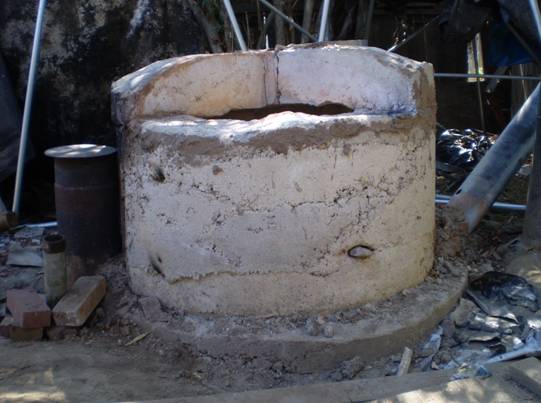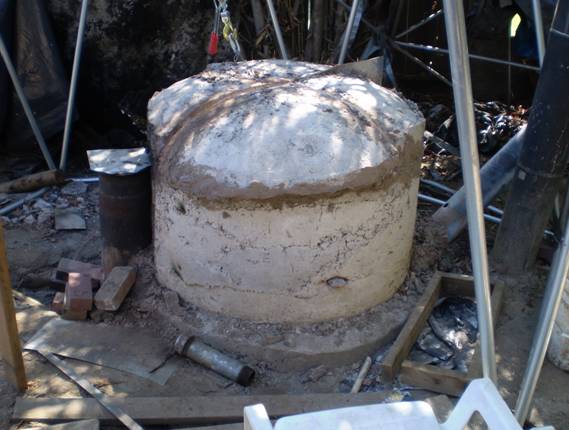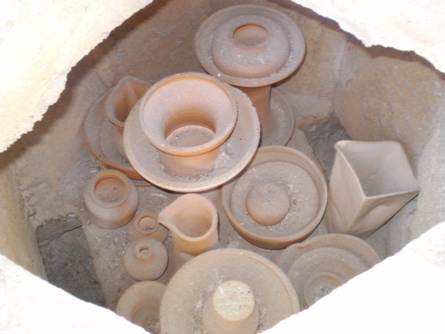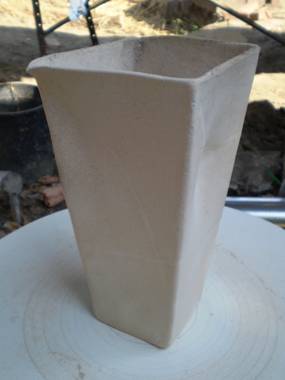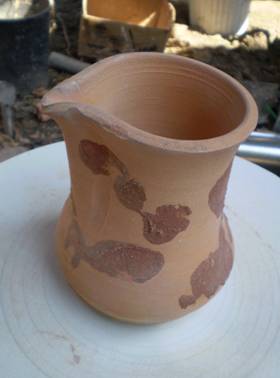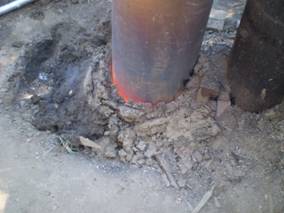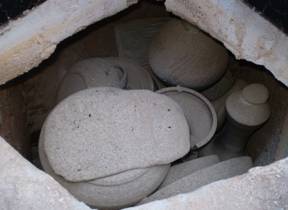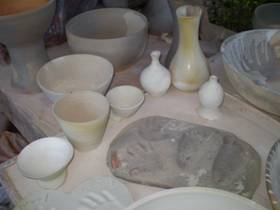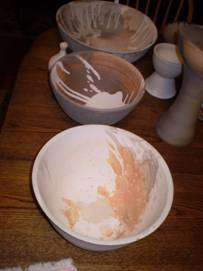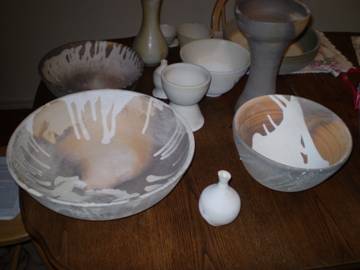The
Cottage Industry Kiln
This kiln was built
for a cottage-industry level of production. Internally, it is a 30”
diameter octagon about 28” high, with both the inlet and
exhaust at the floor level. The 6” diameter stack is controlled
by a damper, and is about 12 feet high.
It is well insulated
in order to minimize the amount of fuel needed. The walls and lid are
10” to 12” thick, and are a combination of clay, sand, a
little cement, and about 30% to 40% vermiculite (a high-temperature
insulating material made from mica).
A wooden form for the
lid was built inside the kiln, and the lid itself was cast with
pieces of sheet metal to divide it into four sections. The wooden
form was burned out after the casting had dried and cured for about a
month – probably more time than necessary.
The fire box is an 8”
pipe that feeds the wood vertically into a small intense fire at its
base. The principle and technology of this style is detailed in the
section titled “Basic Stove”.
The 6” flue is
visible taking off at an angle immediately to the right of the
“muffin.” By looking closely, you can see a ¾”
diameter hole in the top surface of this pipe, about a foot from the
kiln. This was used for inserting and igniting flammable materials to
initialize the draft. This hole was covered by a small wad of mud
once the draft was established. Just out of the picture to the right,
the flue goes vertical to a total height of about 12’, and is
topped by a fire arrester made from ¼” hardware cloth.
In the photo below
you can see the come-along hanging over the lid sections. This was
suspended from a frame of galvanized steel tubing (“top rail”
used along the tops of chain link fences) to assist in manipulating
the lid pieces. These pieces weigh approximately 150 lbs apiece, and
even though you may be brute enough to manage them, such tools make
things a lot safer.
A hole was drilled
through the segment, a rod inserted, and a toggle fixed to it on the
underside. It would have been easier to simply cast a steel handle in
each segment of the lid, but that would have created a problem. Steel
expands with temperature at a much higher rate than concrete, so with
the temperatures involved here, a steel hook would almost certainly
have fractured the surrounding cement. It might still have worked
however, if it had first been wrapped with cardboard.
After feeding the
fire all night and half the next day, the kiln (and my youngest son)
took a day off to rest and cool down. When it was opened not one of
the twenty-five pieces had been damaged.
In the photo below you can see where
the fire enters through the floor on the left, and the flue exhaust
exiting the floor to the right. By having both source and exhaust in
the floor, the temperature stays relatively even throughout the
chamber.
A second burn used a
12-inch diameter piece of stainless-steel, a supply of forced air,
and applied a flow of used crank-case oil for the final stages (The
kiln was heated by wood until the final 2-1/2 hours).
